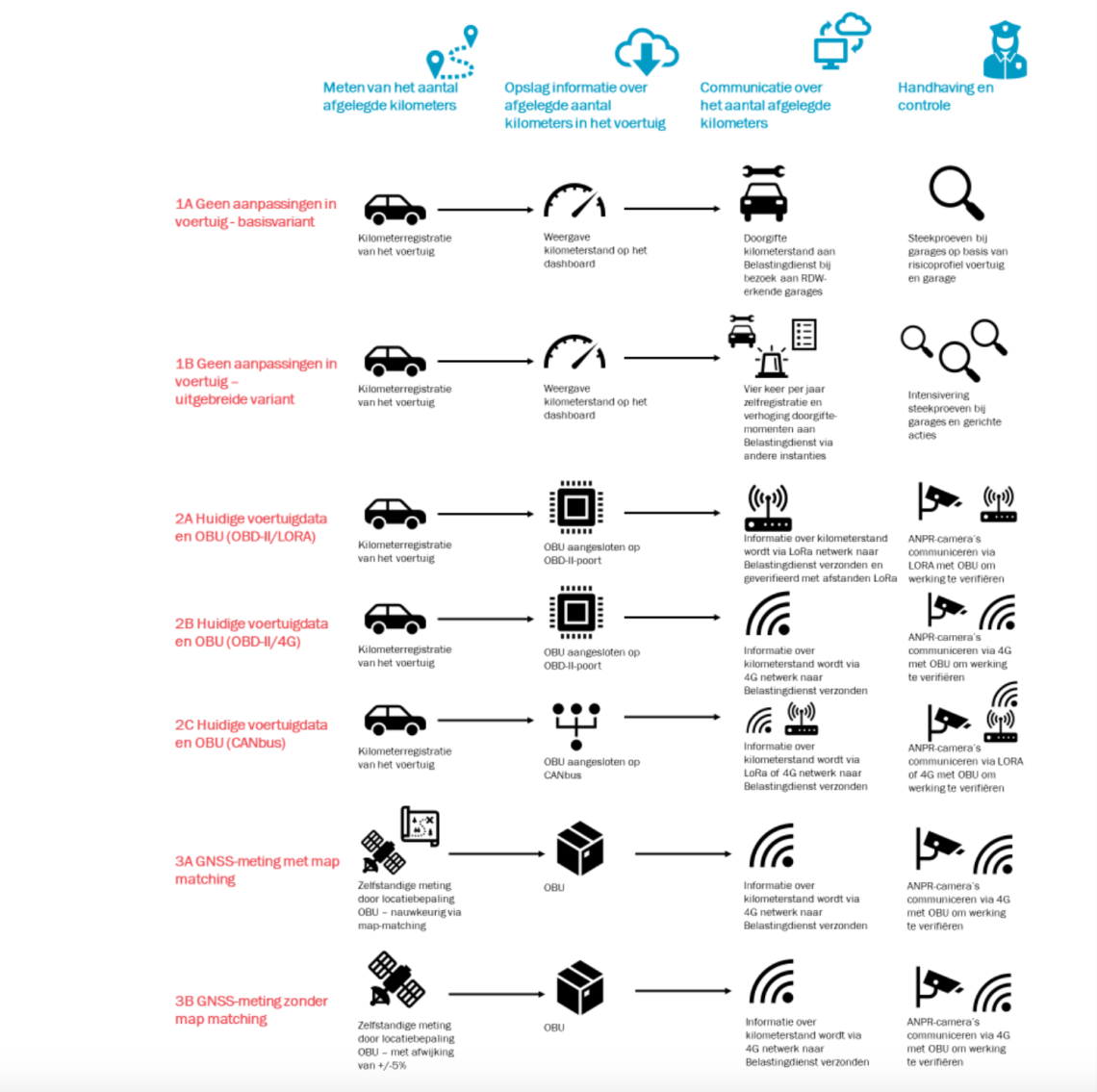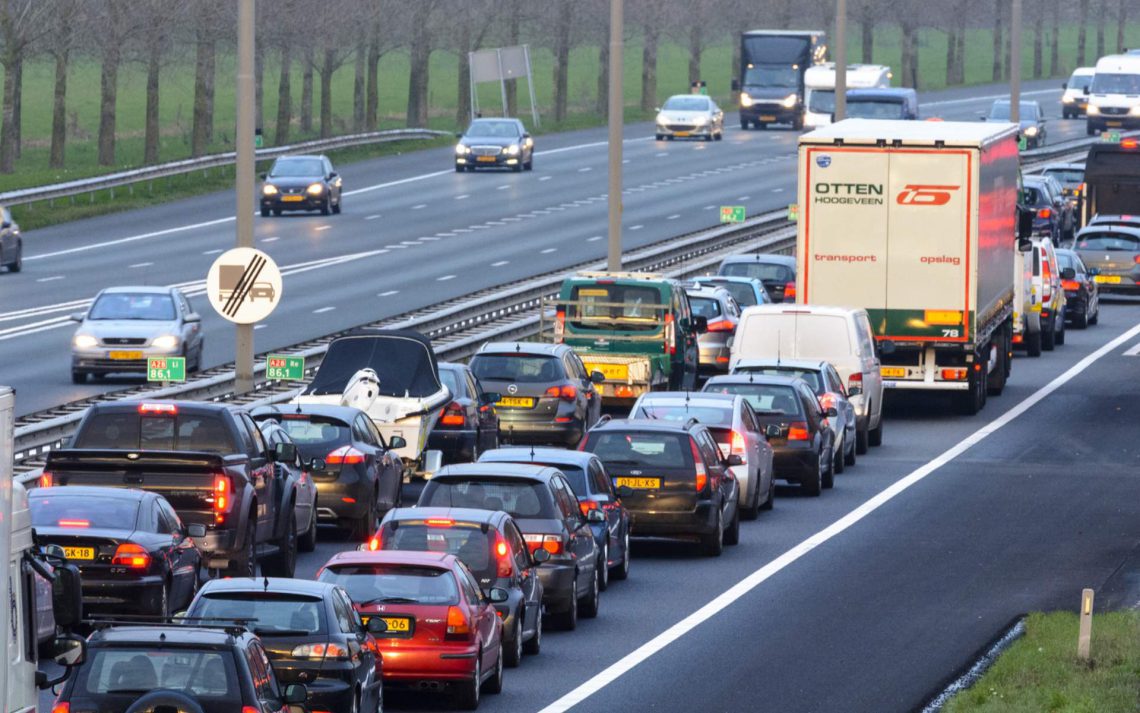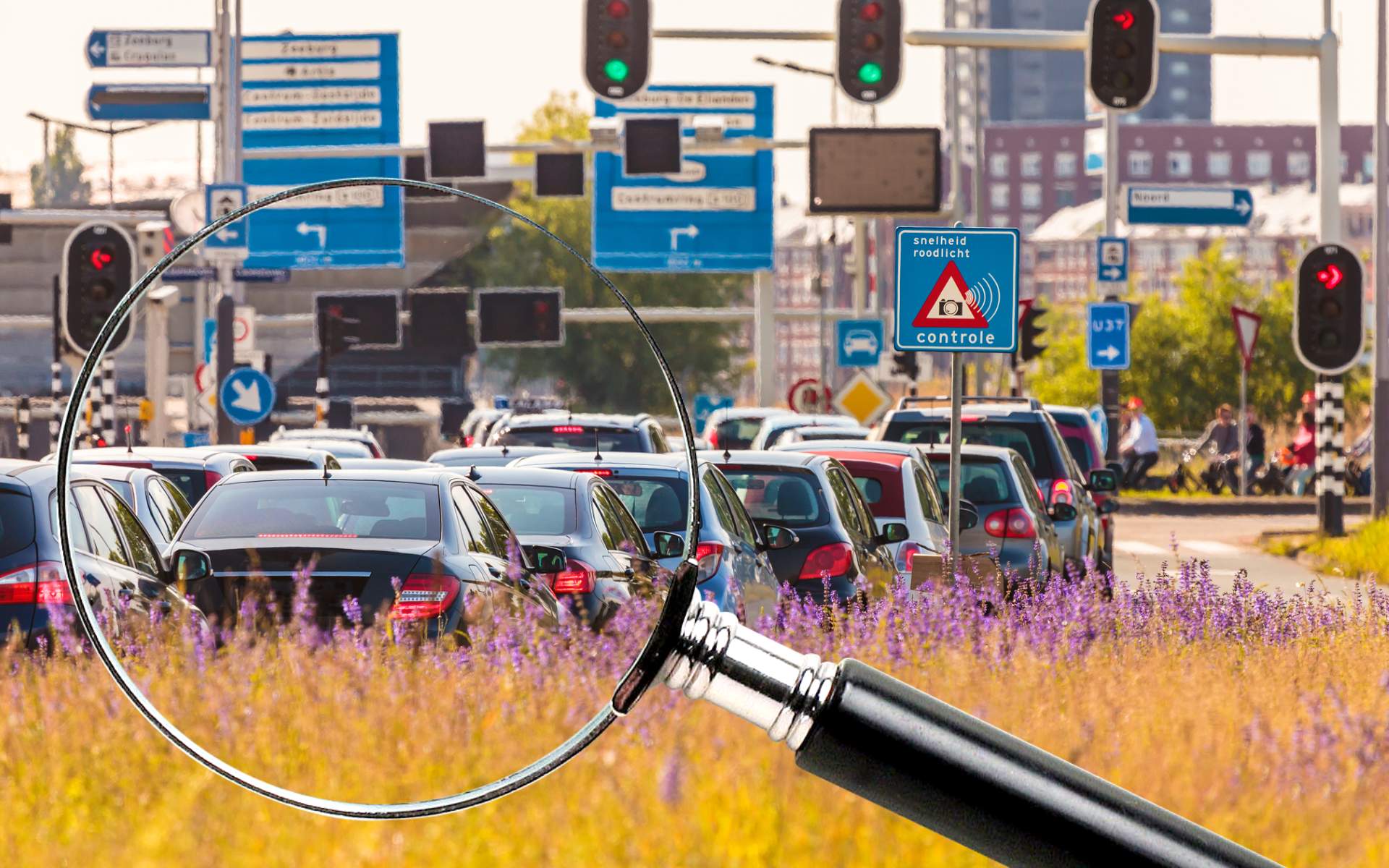A must read: this is how the government will record your mileage for road pricing
Different ways for road pricing
The road pricing study presented to the House of Representatives compares various systems for recording mileage driven on fraud resistance, cost, user privacy, feasibility and ease of use. It also looked at the steps required to implement the system.
Pay by Use (BNG)
The Pay by Use (BNG) study shows that there are several possible ways of registration, each with advantages and disadvantages. One possible way to record mileage is to use the existing odometer. Another possibility is to build a special measuring and recording device (“box”) into the car.
Three solution directions
The study identified three solution options for mileage registration/billing:
1: Build on existing measurement systems and record them, possibly with additional recording moments.
2: Device (on-board unit) in the car that records the mileage of the car without GPS (device is connected to counter and stores data separately).
3: Device (on-board unit) in the car that independently measures, records and communicates kilometers based on GNSS (global navigation satellite system, such as GPS).

Advantages and disadvantages of mileage registration
In order to weigh the pros and cons of different registration systems, the Cabinet will engage in discussions with stakeholders about the study results. In addition, for the option of using the existing odometer, follow-up studies will take place in early 2023. This focuses on the potential fraud behavior of high-risk groups and the measures possible against this behavior.
“With the growing number of electric cars, car tax revenues are decreasing because electric cars are currently not subject to fuel taxes and purchase taxes.”
Central government

If you have ideas about road pricing, you may submit them!
The results of the conversation and follow-up study will serve as a basis for decisions on the precise design of pay-by-use mileage tracking. An Internet consultation on pay-by-use legislation is expected to begin in mid-2023. Then citizens and businesses can also contribute their ideas. Later, a bill will be submitted to the House of Representatives.
Which BNG way is recommended?
The research team recomm ends that follow-up research be conducted to elaborate on various possible measures under solution direction 1 and to develop a more detailed picture of potential fraud behavior by risk group in order to create a focused set of control, monitoring and enforcement measures within solution direction 1.
Road pricing: what about privacy?
One of the cabinet’s guiding principles for the registration system is that only data necessary for taxation will be captured. Therefore, to levy the tax, it is only necessary to record how many miles a car is driven annually. It does not matter where and when these miles were driven. Other principles from the cabinet are that the system should be simple and can be implemented by 2030 at the latest.
Pay by use (BNG)
The introduction of pay by use will make the burden of automobility more balanced and equitable, the government reports. Pay by use also makes an important contribution to two goals. Motorists are encouraged to use their cars more consciously with the introduction of pay by use. In doing so, pay by use helps reduce CO2 emissions. The system thus has a positive effect on improving air quality and is also expected to reduce road congestion.

It’s actually the fault of EVs
Another goal is to maintain tax revenues. With the growing number of electric cars, car tax revenues are declining because electric cars are currently not subject to fuel taxes and purchase taxes. Revenues from these car taxes pay for services such as healthcare, education and road maintenance. This will continue to require tax revenues.
Mileage counter manipulation
The biggest pitfall of mileage tracking, of course, is counter manipulation. Counter manipulation is estimated to occur in up to 1 percent of vehicles registered in the Netherlands, despite being relatively easy to commit. An analog counter can be reversed, values of a digital counter can be adjusted, and data streams in vehicles can be manipulated so that the digital odometer records fewer miles than are actually driven.
However, since meter readings are periodically registered centrally (first through the National Vehicle Pass, now at the RDW), it is no longer possible to reverse meter readings unnoticed to such an extent that this leads to a substantially higher sales price of a vehicle. This makes it less lucrative to commit counter fraud.
Taxation based on counter readings
The BNG study states the following: “When tax is levied based on in-car counter readings, the incentive to engage in counter manipulation increases again. If the financial incentive is sufficient (motivation) and one has the opportunity (low chance of being caught, easy to execute), there is a real risk of counter fraud. Counter fraud still occurred in half of the Dutch vehicles in about 1990 and currently still occurs in 20 to 40 percent of the (less controllable) import vehicles. While these numbers are not representative of the average private car owner, it does show that there are groups willing and able to commit such fraud.”
Depending on several factors
How great the ultimate risk of fraud is depends not only on the technical system used to record mileage, but also on other aspects such as the amount of the fee, penalties and contribution to climate goals.
Highest risk of counter fraud in 2030 among 5- to 15-year-old vehicles
“Given vehicle characteristics, vehicles between 5 and 15 years old in 2030 appear to be the highest risk group for counter manipulation. Vehicles older than 15 years generally drive very little, with which the financial incentive to manipulate counter readings is likely to be small. New vehicles are becoming increasingly difficult to manipulate: first of all because there are more and more data points with checks and balances in vehicles. And manipulation becomes even more complex when vehicles are also connected and share live vehicle data with central servers. It is expected that by 2030, counter manipulation for vehicles younger than 5 years old will therefore become very complex, even if some uncertainties apply,” said the research team.
‘Connected’ vehicles
Almost all vehicles produced between 2025 and 2030 are expected to be “connected. Vehicle data can thereby be shared real-time with the manufacturer. That is not to say that governments in 2030 can also use this data from connected vehicles, for example, as mileage registration for BNG or monitoring. Countries are working on legislation at the European level to require manufacturers to disclose certain vehicle data. The draft European Data Act looks at whether certain vehicle data, such as meter readings, fuel and energy consumption, should be accessible to governments.
Data exchange risks
By 2030, at least half of the vehicle fleet will not yet be “connected. There is another problem: vehicle manufacturers often stop remote support after a number of years unless owners take out a subscription. If a manufacturer goes bankrupt, data exchange also stops. ‘Connected’ vehicles offer additional opportunities to facilitate (automate) transmission of odometer readings and possibly tighten controls, but this will not be an option for more than half of the fleet in 2030.
Level of tax rate for road pricing
An important uncertainty is in the level of the tax rate, specifically for those at risk who can easily manipulate their counter. The rate structure for BNG is not yet known. Therefore, three different levels were calculated as working assumptions: 5, 10 and 15 cents per kilometer. In 2030, it is expected that for the purpose of budget neutrality, the average rate for passenger cars will already be around cents per kilometer. It may vary by vehicle category (weight and fuel).
In an earlier article on road pricing/kilometer charge, we already listed all the rates you will soon be paying.

